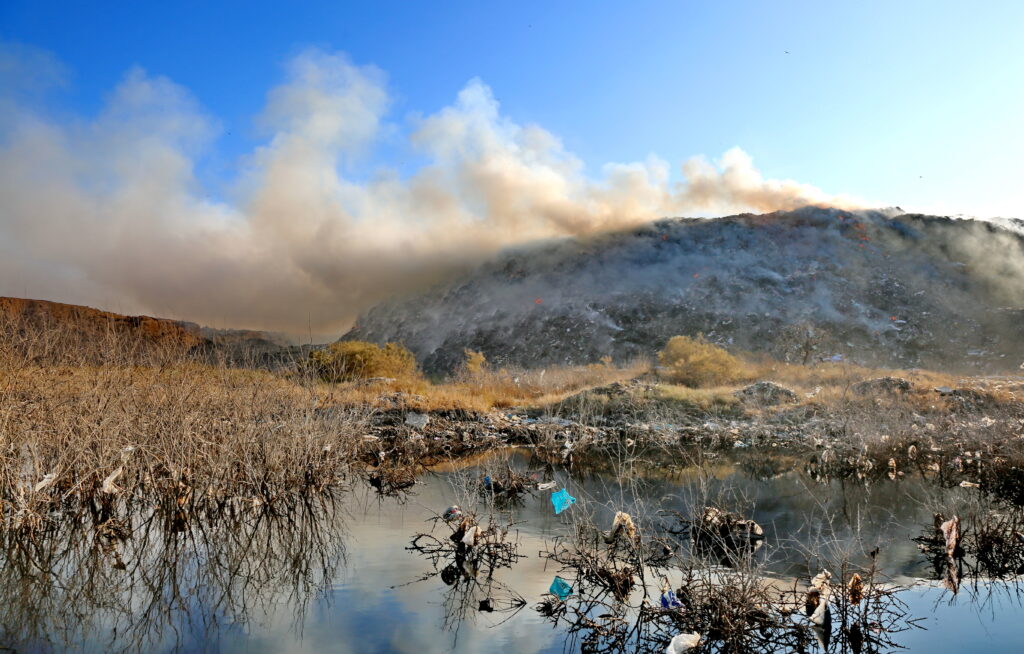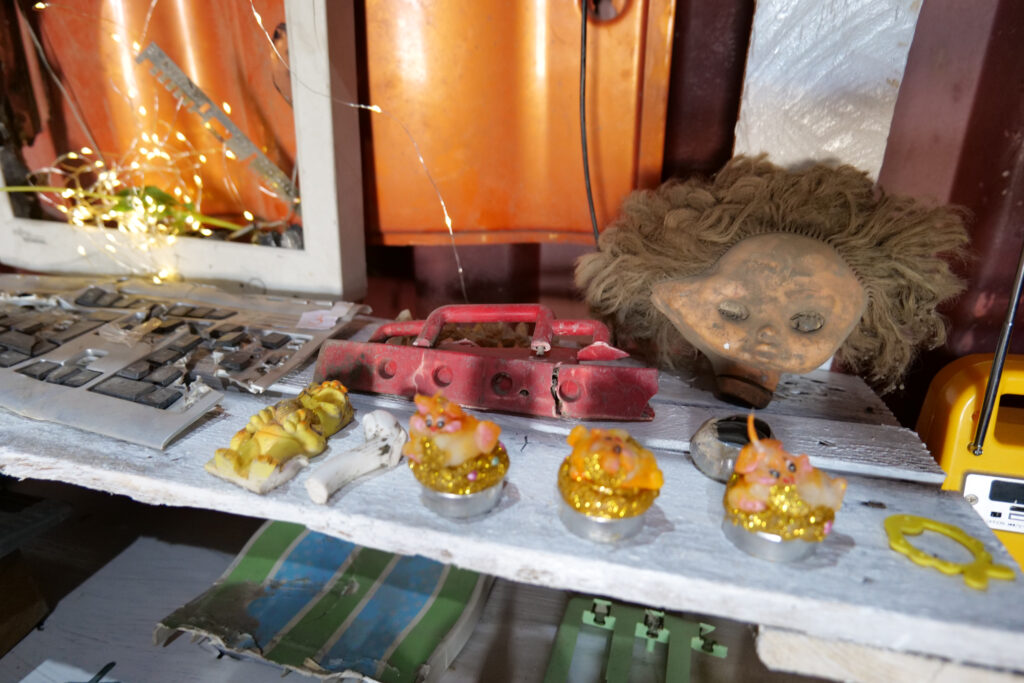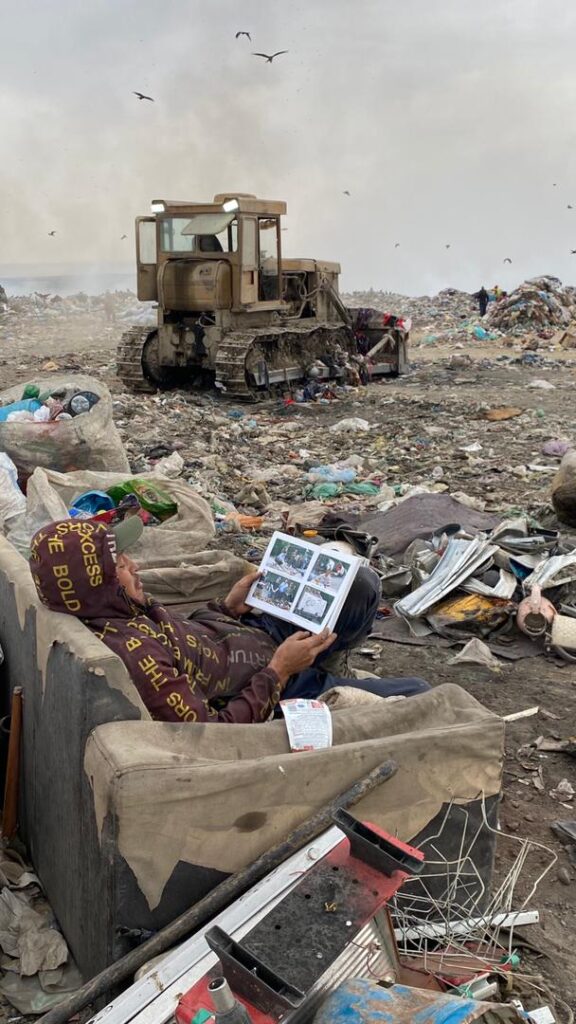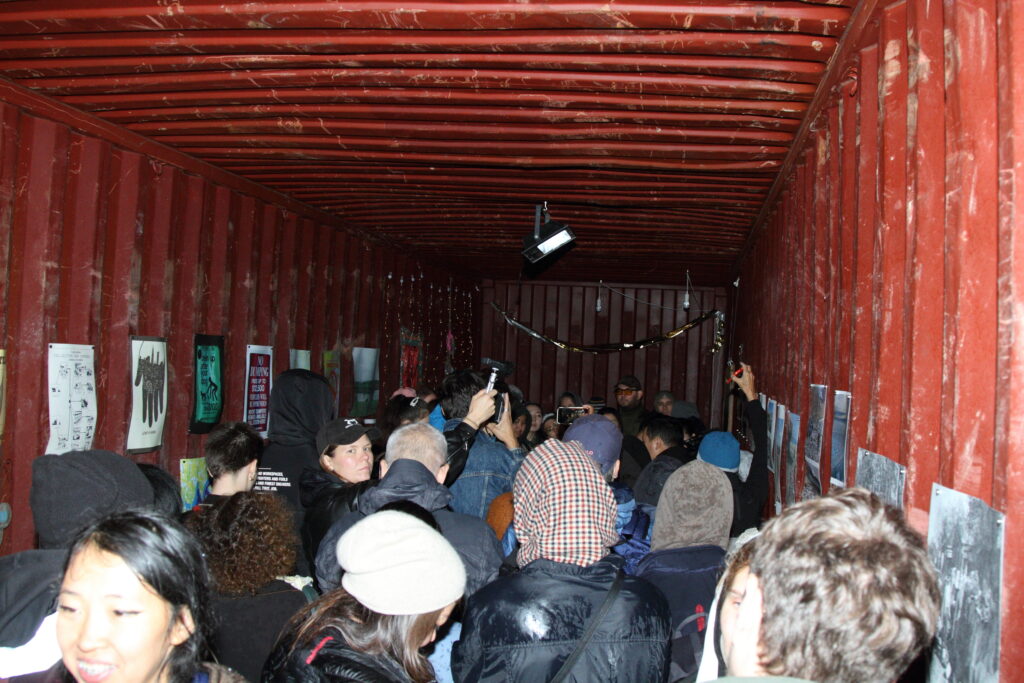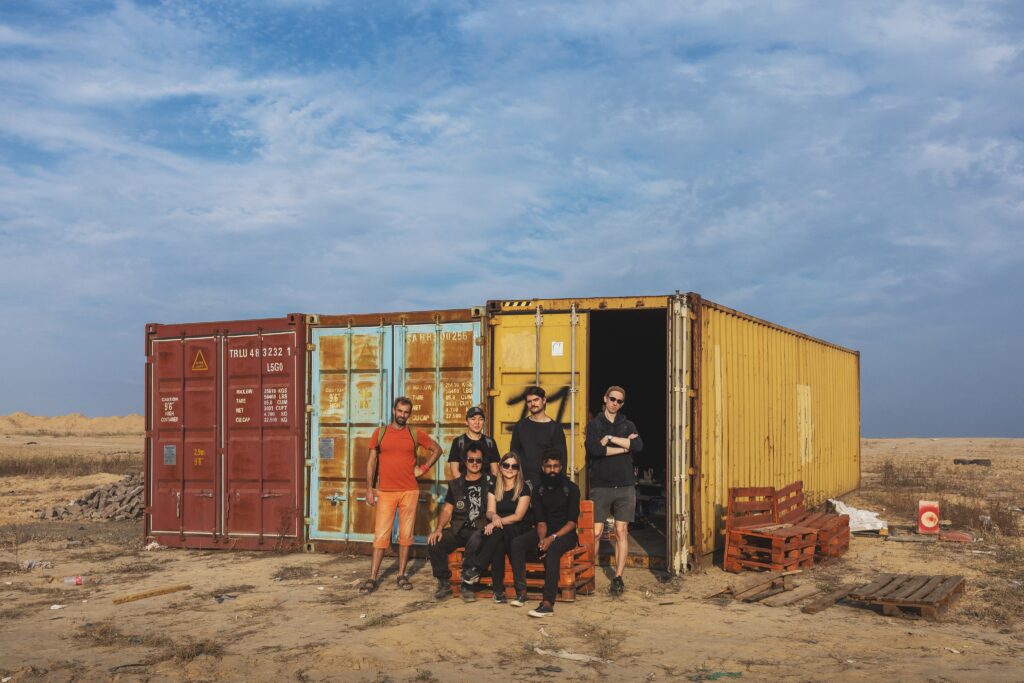Trash is the autobiography of our existence that we all co-write every single day. The bulk of this history are the remnants of what sustained us or entertained us, from a simple pleasure to an absolute necessity. Even the most conscientious of us leave a trail of imprints on this planet from the moment we are born. Follow them and you will discover a life path interwoven with the products and technology of the day. It is easy to be overwhelmed by this essential ritual of subtraction that both defines our private life and our shared public spaces, thus it often resides in the shadows, unseen, ignored, banished “away” for others to deal with. “Away” however is always a real place populated with real people doing some of the realest jobs.
In Bishkek, that place is the landfill that is often referred to as the Poligon or the Hill, located in the most northern part of the city, near a neighborhood called Altyn-Kazyk. Everything comes there by truck or donkey in an ever-flowing single stream of trash 24 hours a day: from food waste to paper, plastic, metal, dead animals, and sometimes live ones too. There is surprisingly a lot of life amidst the trash mountain heaps. I observed packs of wild dogs, stray cats, crows, horses, and even some chicks freshly hatched from their disposed eggs. I heard horrifying tales of dead bodies and abandoned newborn babies, chemical waste, and ever-raging trash fires that would sometimes self-ignite due to the methane gas but thankfully this seemed to be of the (not so distant) past. Just as recently as May 2023, the landfill was openly burning the mixed garbage which of course created horribly toxic conditions for everyone working and living here.
In 2022, Bishkek’s air quality was ranked second worst in the world, and its main culprits were the landfill, coal usage and vehicle emissions (catalytic converters are scarce.) So the fact that the landfill had recently stopped burning was a really big deal. The local artists and activists that I had been in contact with have been working on these issues for over a decade and their hard work was beginning to pay off. A compassionate new landfill director enabled these changes and so when I brought up the idea of creating a Trash Museum at the landfill, everyone seemed to be on board.
When I arrived to town, things were already in full swing. A shipping container was to be placed on site at the landfill for us to use and the first time I visited, we watched as it was getting craned into place. Immediately following this celebratory moment, a local news blog wrote about the project and subsequently some government officials got wind of this Trashy Museum and effectively put a stop to our humble idea.
In the spirit of not taking no for an answer, we naturally decided to fight this decision and began to show up regularly at City Hall and other various city offices to find the right people to talk to. One person would lead to another person and then another, all as unlikely as an ally as the next but through some sincere conversations (and gifts of NY sanitation swag), we were beginning to change their minds. It was an incredible thing to witness, the change in perspective as we presented our case.
The idea of mixing the arts with municipal waste management is still radical in most parts of the world and so it wasn’t particularly surprising that this idea didn’t initially go over well. Trash is also such a touchy subject because no one really wants to think about it nor promote actually going to see it lest something goes horribly wrong. Once they realized that we were not trying to exploit or endanger anyone, or attempt to make them look bad either, I think they could see this as an opportunity for a positive and educational partnership with public outreach that they don’t normally get to have.
After two weeks, we officially got the green light. It was a momentous win, not just for this project but for the potential of creating more collaborative art projects with the city government. While we were battling for this victory, we also made sure to hit the municipal archives for records on the landfill and trash in Bishkek. That was an experience unto itself as we dug into the musty card catalogs of their Soviet-era records, snapping cellphone pics of documents and getting some scans of the black and white photos depicting the Brick Factory that was at the landfill site prior to the trash. Needless to say, they were a little baffled by our garbage-related requests and I was surprised at how little there seem to be. Were these records thrown out with the trash too?
With the City Hall win under our belt, I set my sights on the site itself and began going to the landfill on a daily basis. I was initially met with some side-long glances by the locals which is to be expected but I felt like I rather quickly became a regular character among the group.
I particularly grew fond of Almas, the deputy director of the landfill, who invited me for tea and soup one afternoon. Sitting around armed with Google Translate, we became fast friends as we spoke of our lives, jobs, and common interests in trash. It was so great to be incredibly far away from my life in NY and yet feel right at home with Almas and his crew as we sat in their kitchen at the landfill. The more I showed up, the more I learned and took in. I asked them to add objects they had found while on the job to the “permanent collection” and received bowling balls, candles, a ceramic crane, a Boss wristwatch, and a light up toy that still worked and showed a cityscape whizzing by.
I began picking up lots of objects myself as my eyes had finally adjusted to be able to discern what was really out there. At first, it is just an overwhelming sea of colors and textures, mangled together through some kind of twisted fate, weathered by the world and encrusted with the land that it would soon be buried into. I recalled the first time I had gone to the desert in California and was able to train my eyes to perceive the full bandwidth of color and life that is really out there in the seemingly blank landscape.




